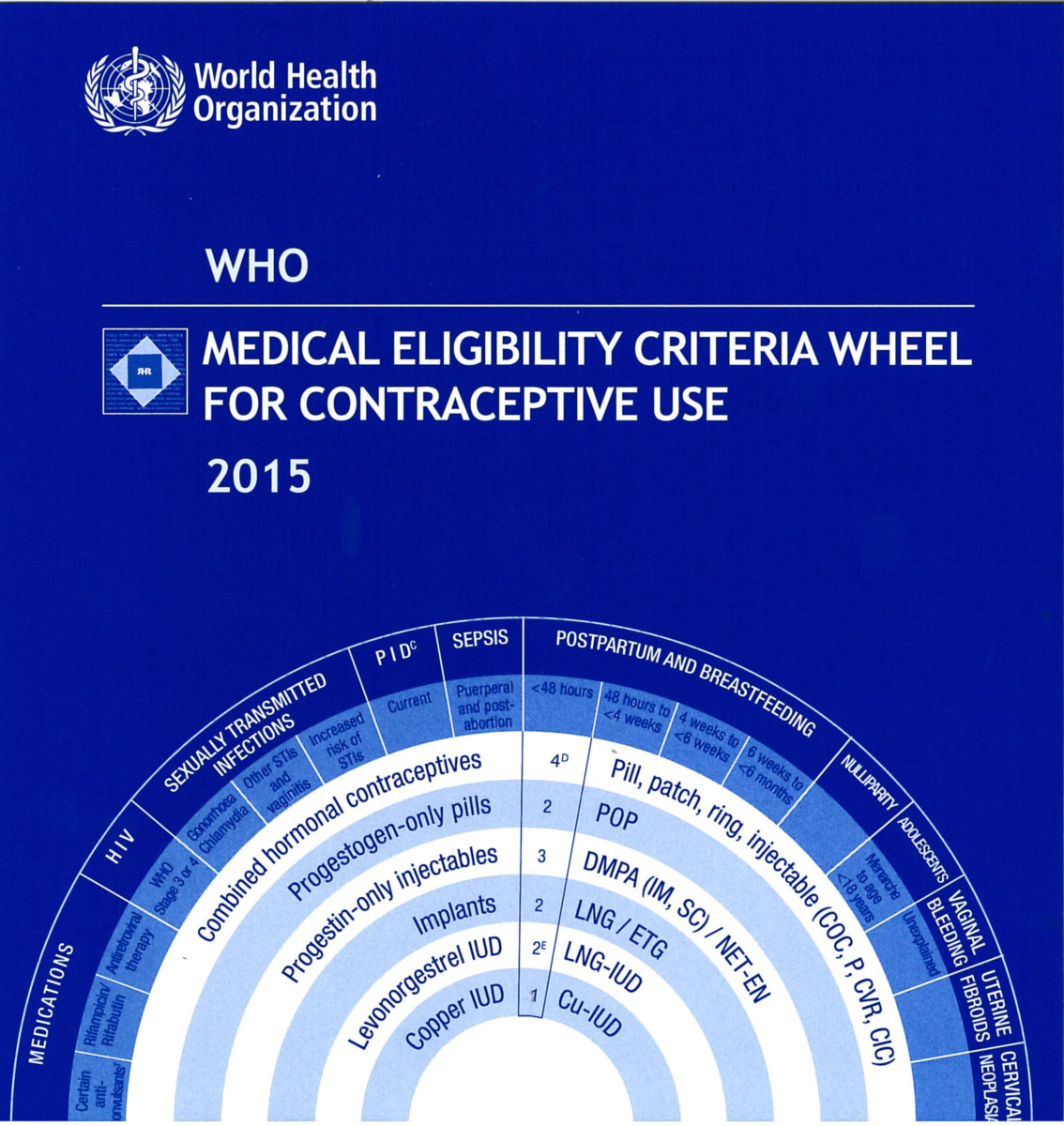WHO Medical Eligibility Criteria Wheel for Contraceptive Use 2015 Update
- Publisher
World Health Organization - Published
24th November 2015 - ISBN 9789241549257
- Language English
- Size 7.5" x 7.875"
This product is a pack of 20 wheels.
Family planning allows people to attain their desired number of children and determine the spacing of pregnancies. It is achieved through use of contraceptive methods and the treatment of infertility. Promotion of family planning--and ensuring access to preferred contraceptive methods for women and couples--is essential to securing the well-being and autonomy of women, while supporting the health and development of communities.
Family planning / contraception is key to slowing unsustainable population growth and the resulting negative global impacts on the economy, environment, and national and regional development efforts. It follows therefore that safe contraceptive methods need to be available to as many women as possible, including those that have a pre-existing medical condition.
WHO's Medical Eligibility Criteria for Contraceptive Use, which was first published in 1996, provides family planning providers with guidance on helping those living with medical conditions to find a contraceptive method that works for them. For each medical condition or medically relevant characteristic, contraceptive methods are placed into one of four numbered categories.
Category 1. A condition for which there is no restriction for the use of the contraceptive method
Category 2. A condition where the advantages of using the method generally outweigh the theoretical or proven risks
Category 3. A condition where the theoretical or proven risks usually outweigh the advantages of using the method
Category 4. A condition which represents an unacceptable health risk if the contraceptive method is used.
This simple classification enables family planning providers to provide contraception safely to women (and men) who previously may have been excluded from methods because of a lack of clinical guidance.
World Health Organization
World Health Organization is a Specialized Agency of the United Nations, charged to act as the world's directing and coordinating authority on questions of human health. It is responsible for providing leadership on global health matters, shaping the health research agenda, setting norms and standards, articulating evidence-based policy options, providing technical support to countries, and monitoring and assessing health trends.


